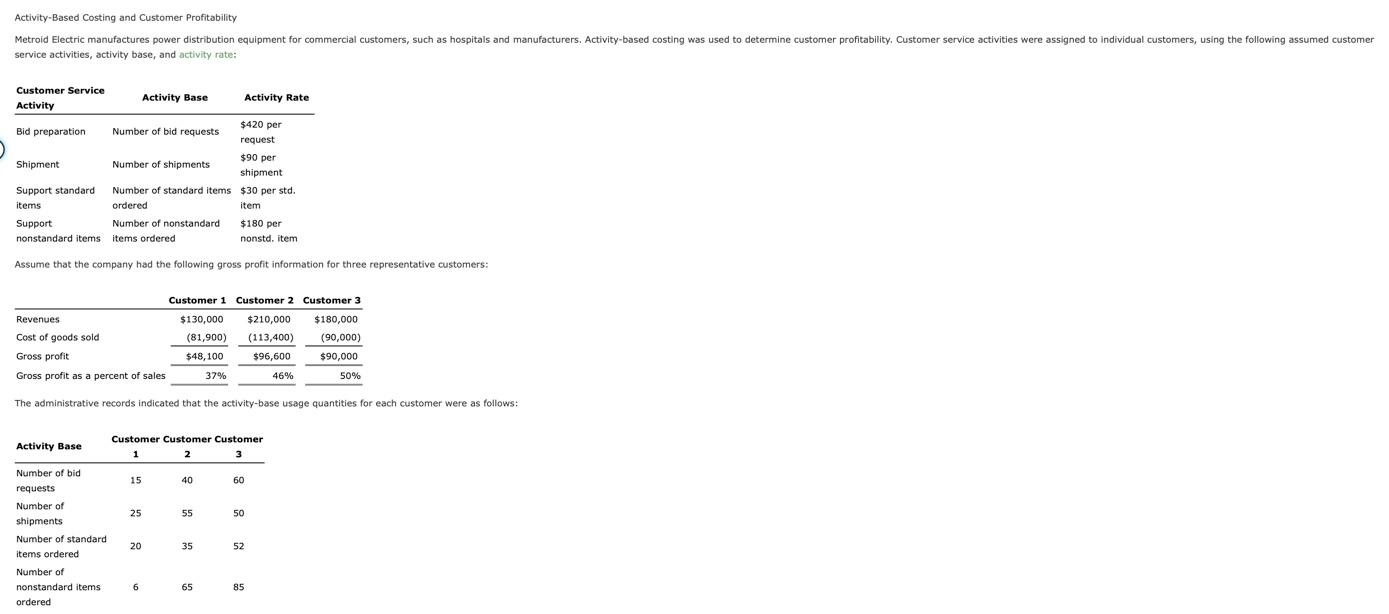Question
Activity-Based Costing and Customer Profitability Metroid Electric manufactures power distribution equipment for commercial customers, such as hospitals and manufacturers. Activity-based costing was used to determine
Activity-Based Costing and Customer Profitability
Metroid Electric manufactures power distribution equipment for commercial customers, such as hospitals and manufacturers. Activity-based costing was used to determine customer profitability. Customer service activities were assigned to individual customers, using the following assumed customer service activities, activity base, and activity rate:
| Customer Service Activity | Activity Base | Activity Rate |
| Bid preparation | Number of bid requests | $420 per request |
| Shipment | Number of shipments | $90 per shipment |
| Support standard items | Number of standard items ordered | $30 per std. item |
| Support nonstandard items | Number of nonstandard items ordered | $180 per nonstd. item |
Assume that the company had the following gross profit information for three representative customers:
| Customer 1 | Customer 2 | Customer 3 | ||||||
| Revenues | $130,000 | $210,000 | $180,000 | |||||
| Cost of goods sold | (81,900) | (113,400) | (90,000) | |||||
| Gross profit | $48,100 | $96,600 | $90,000 | |||||
| Gross profit as a percent of sales | 37% | 46% | 50% | |||||
The administrative records indicated that the activity-base usage quantities for each customer were as follows:
| Activity Base | Customer 1 | Customer 2 | Customer 3 |
| Number of bid requests | 15 | 40 | 60 |
| Number of shipments | 25 | 55 | 50 |
| Number of standard items ordered | 20 | 35 | 52 |
| Number of nonstandard items ordered | 6 | 65 | 85 |


Step by Step Solution
There are 3 Steps involved in it
Step: 1

Get Instant Access to Expert-Tailored Solutions
See step-by-step solutions with expert insights and AI powered tools for academic success
Step: 2

Step: 3

Ace Your Homework with AI
Get the answers you need in no time with our AI-driven, step-by-step assistance
Get Started


